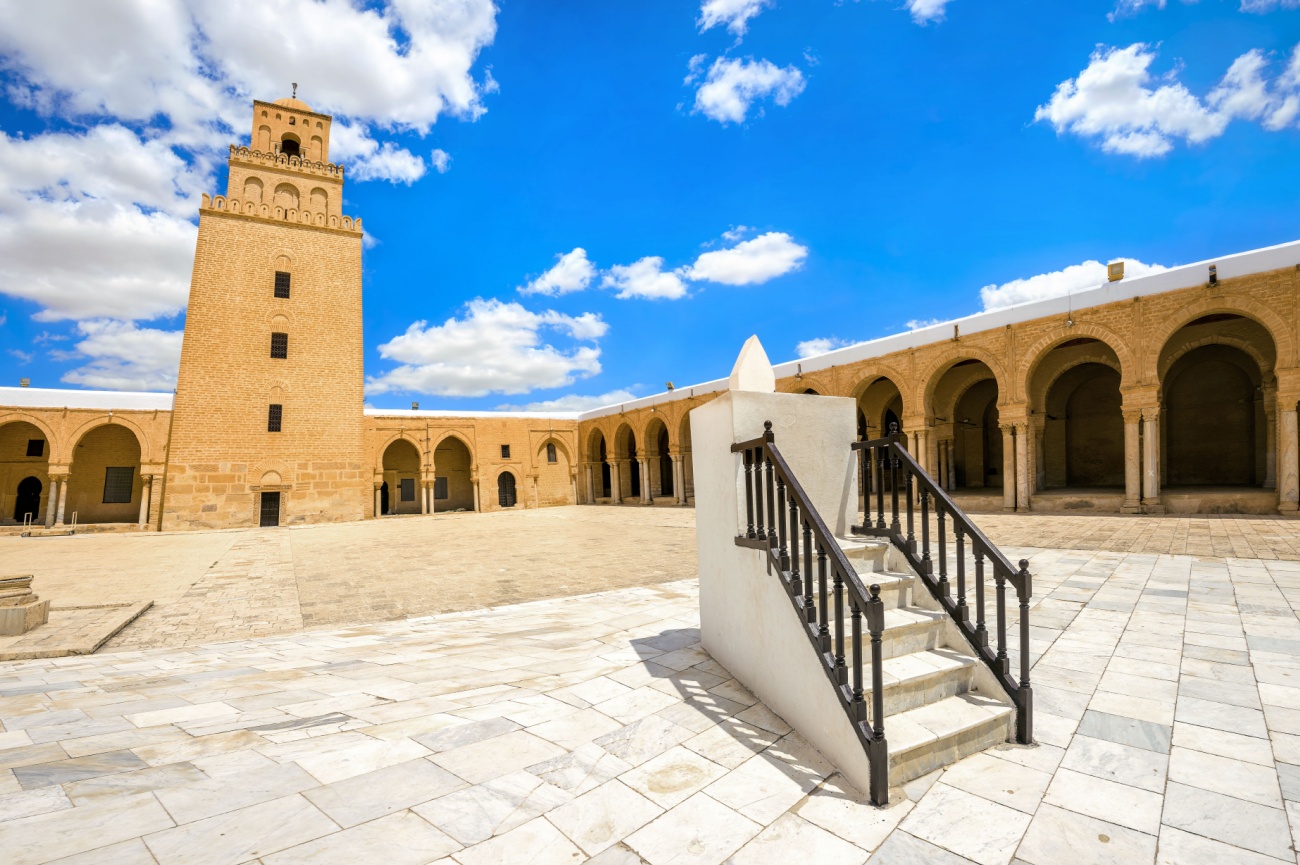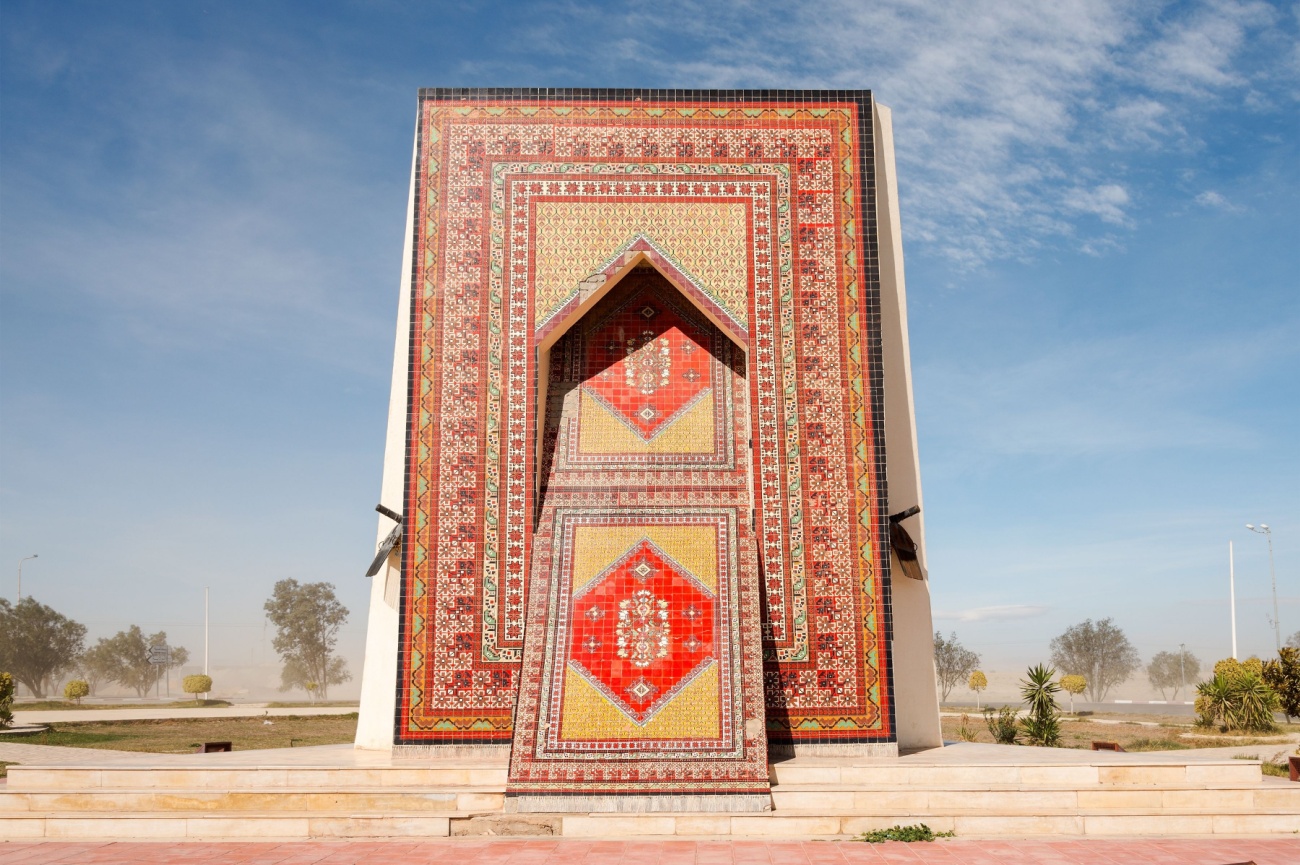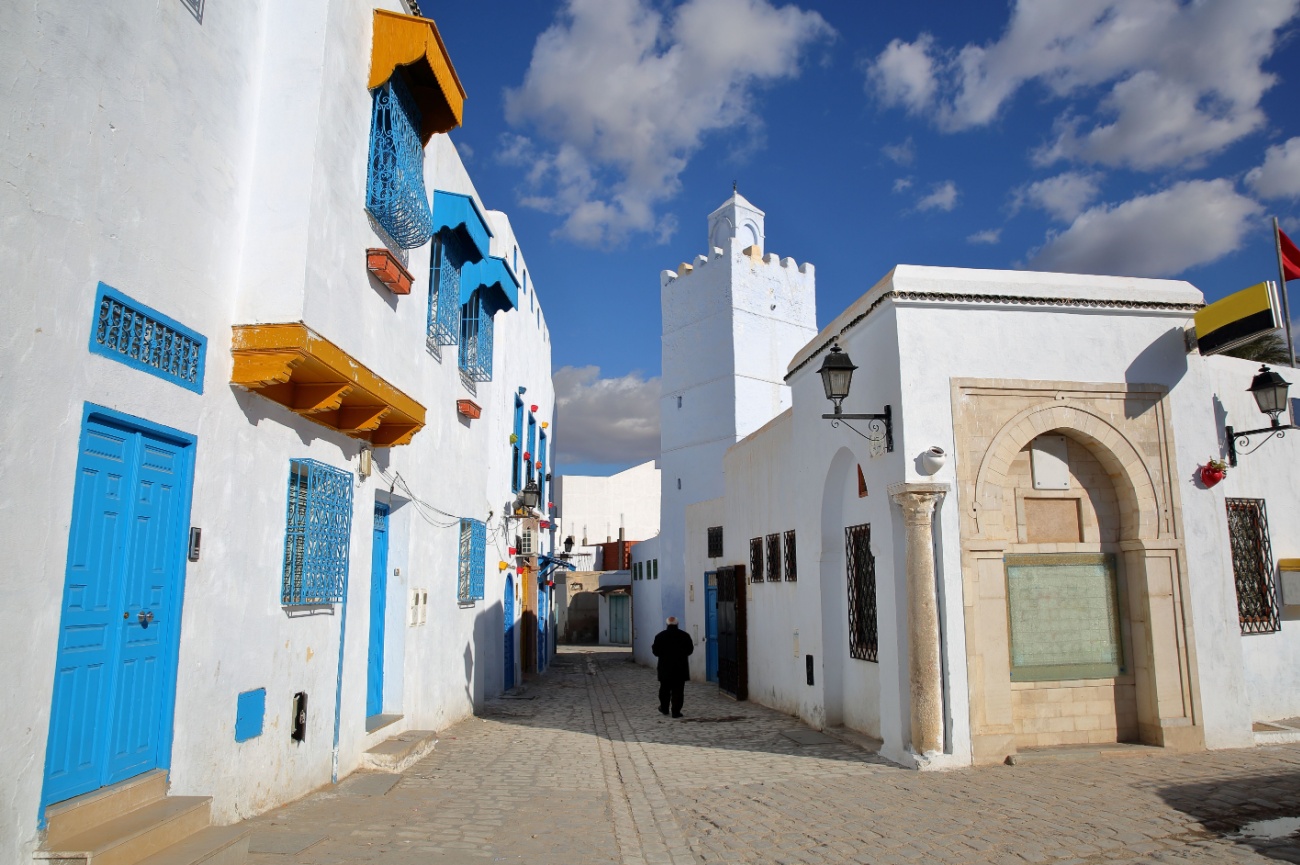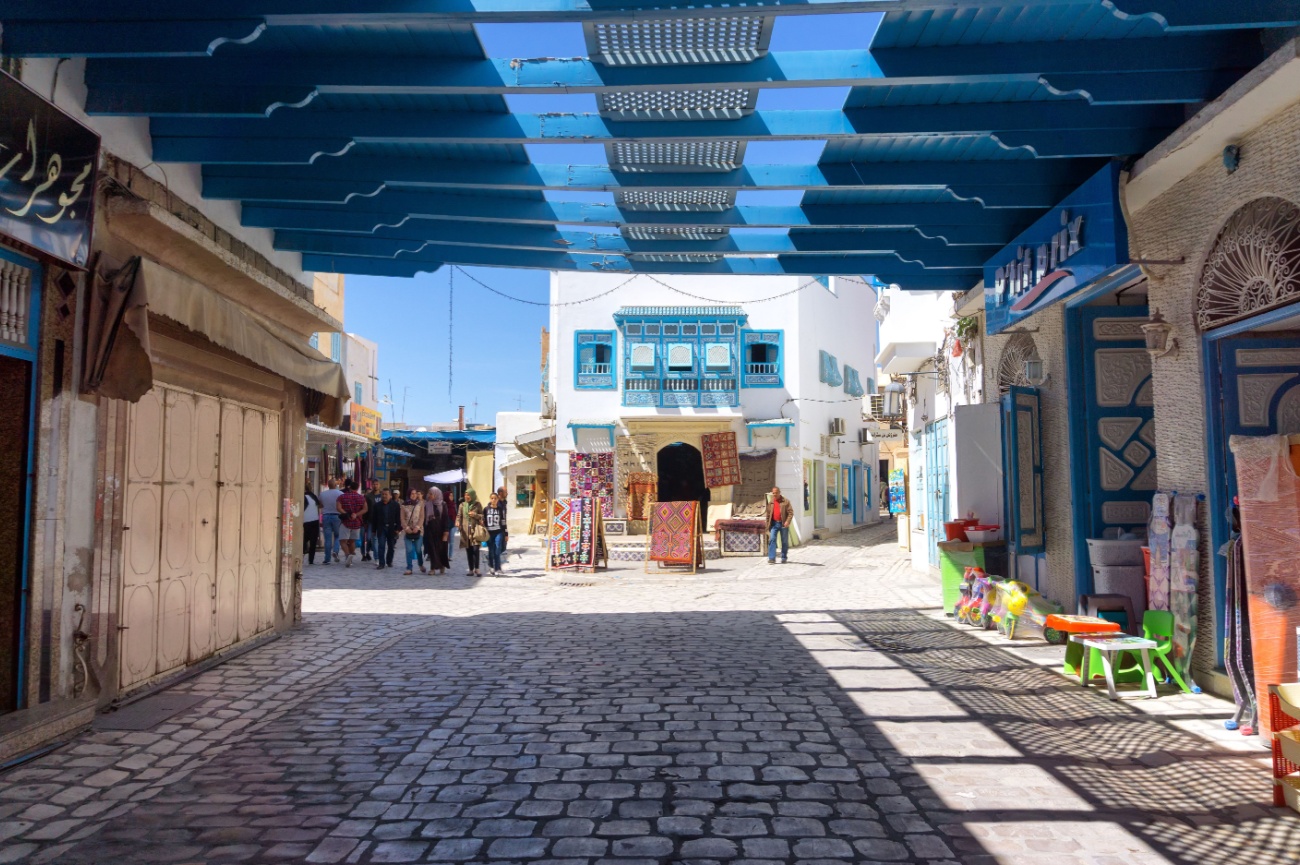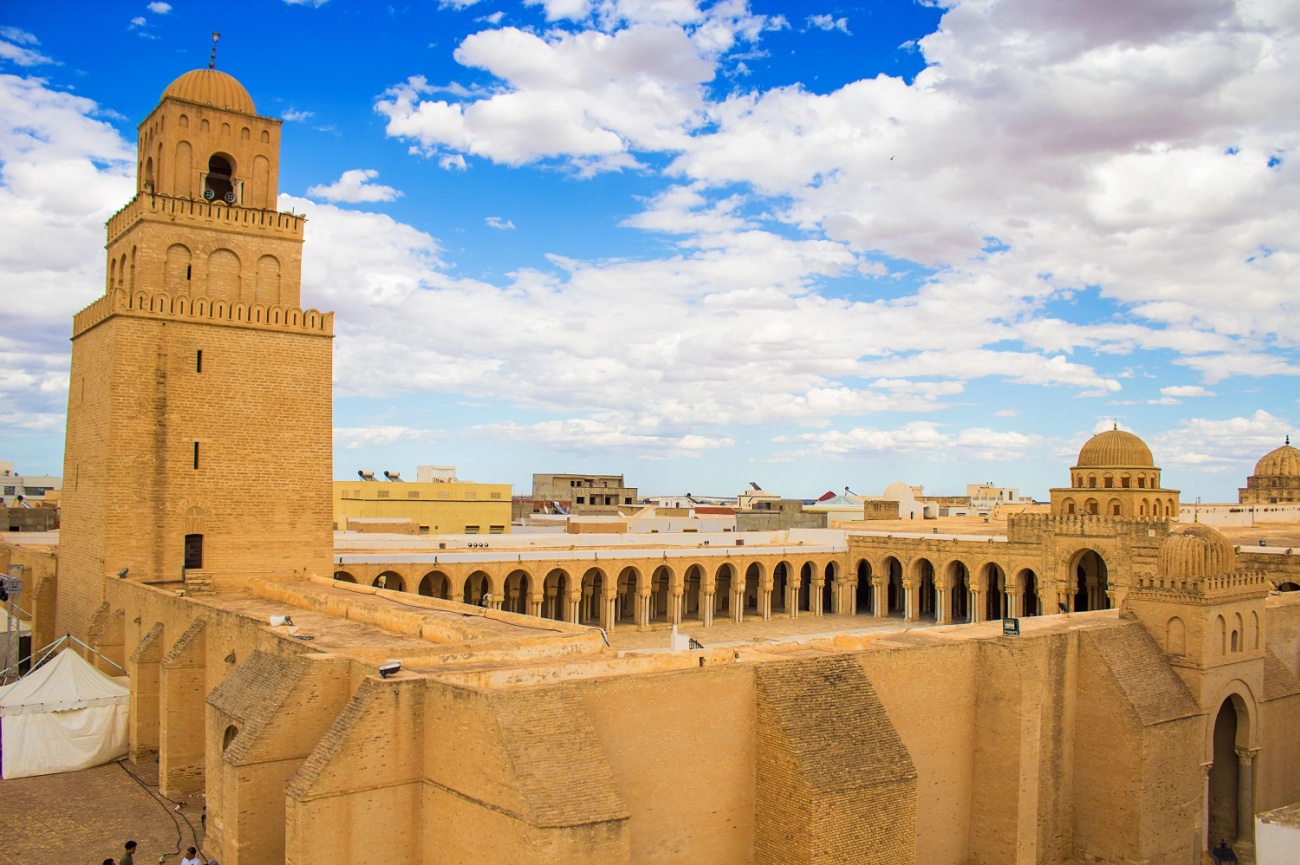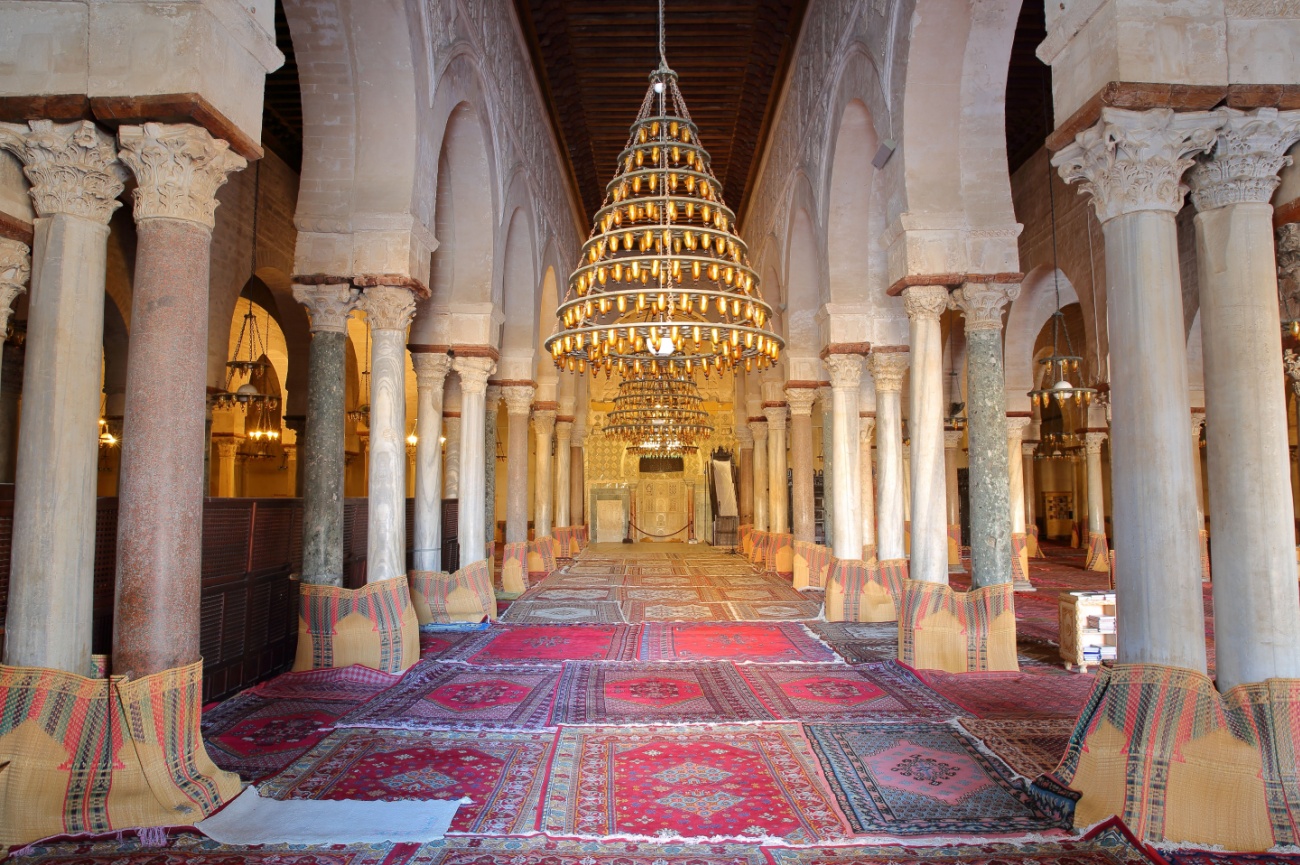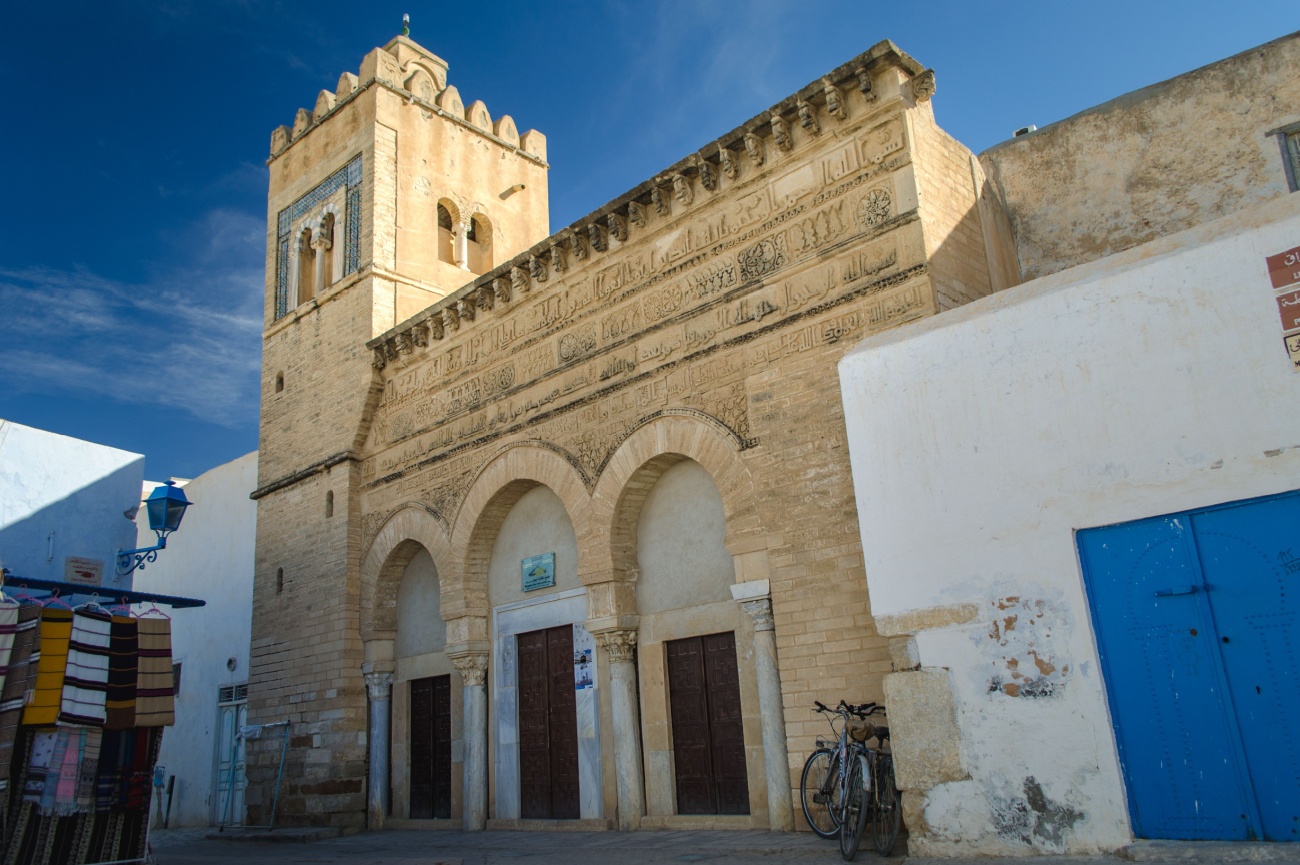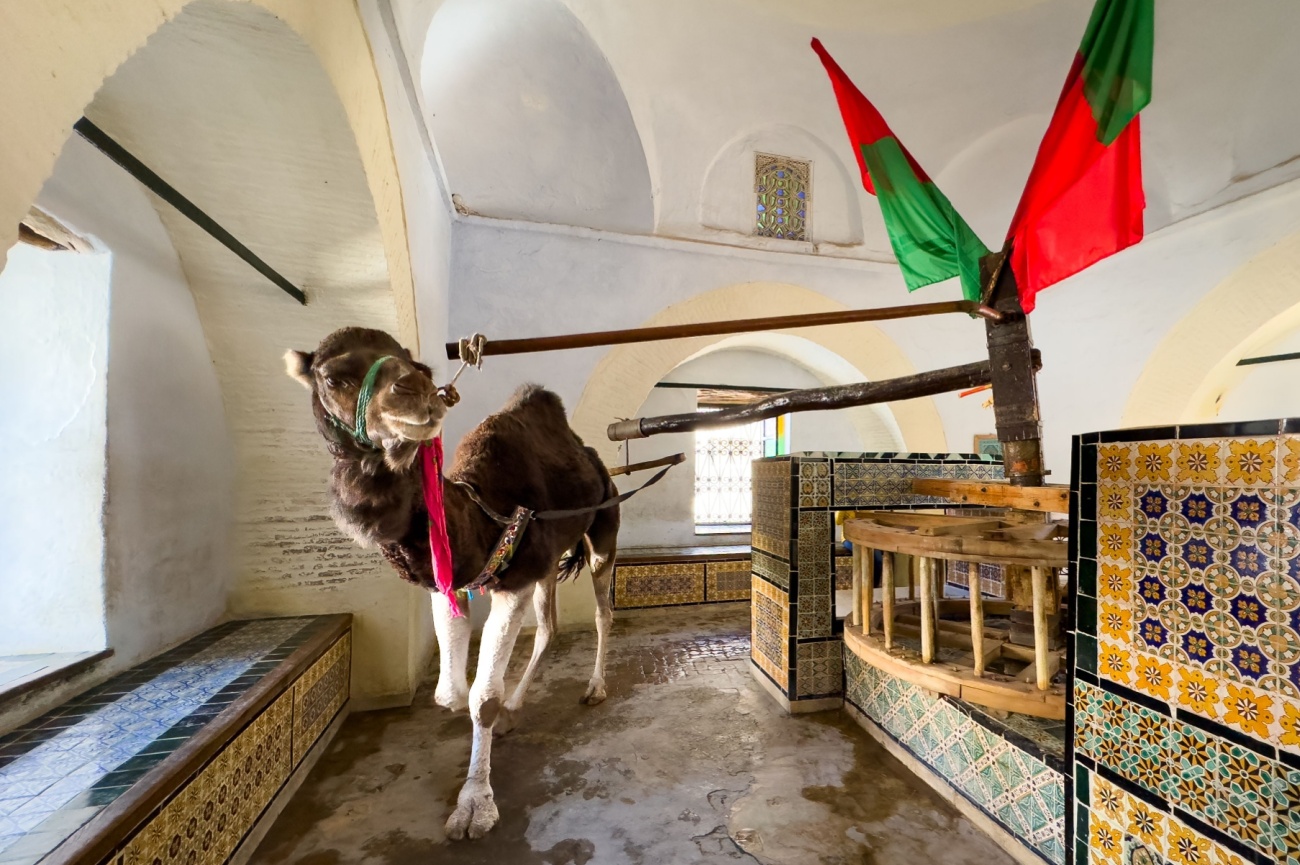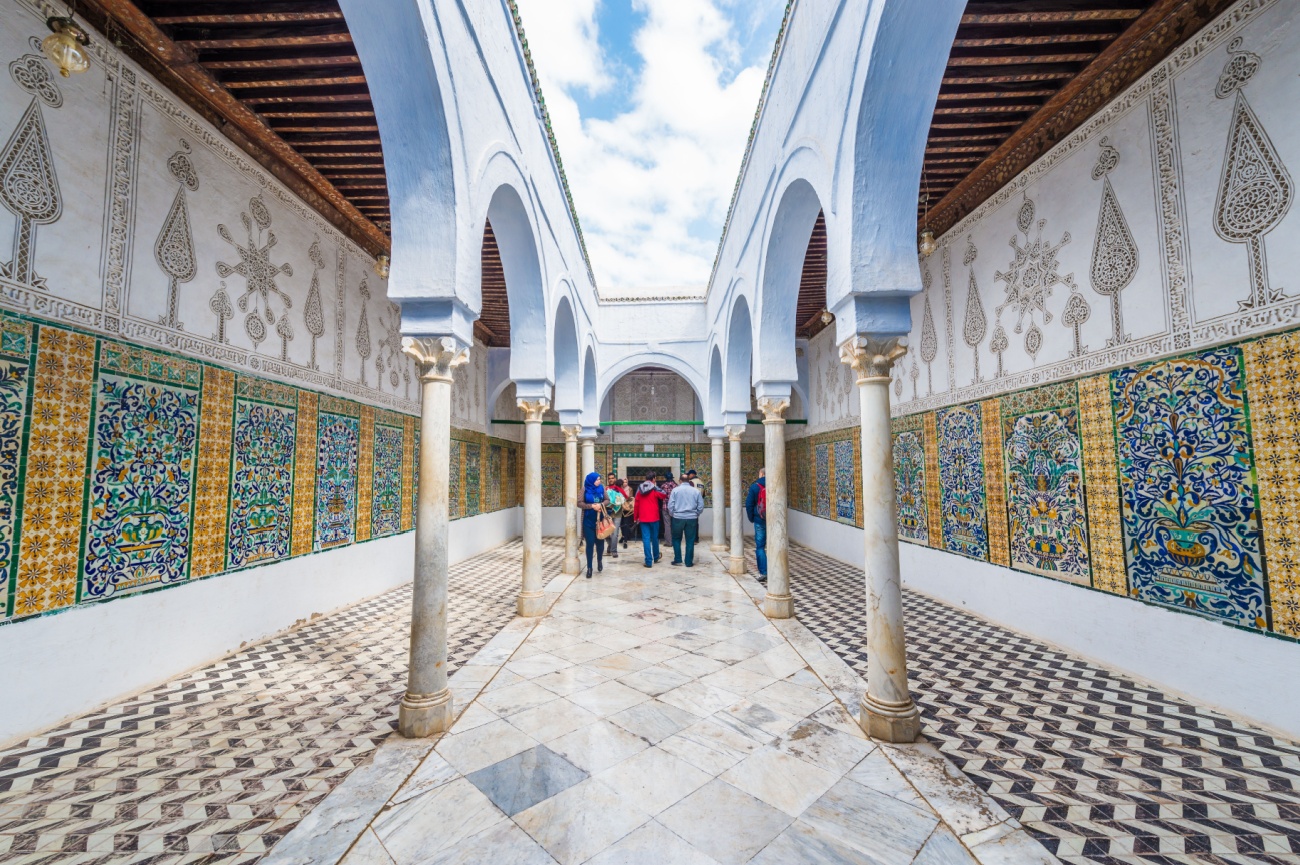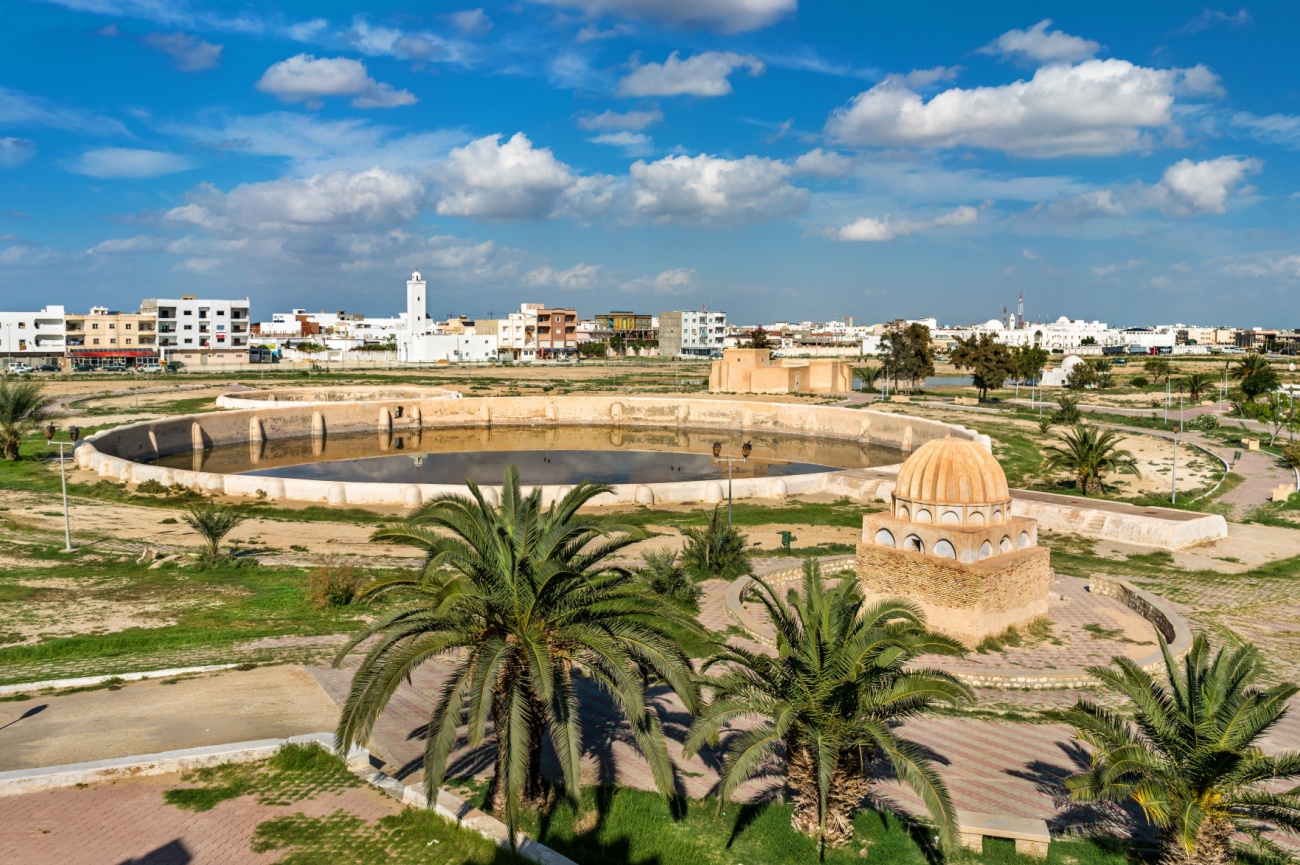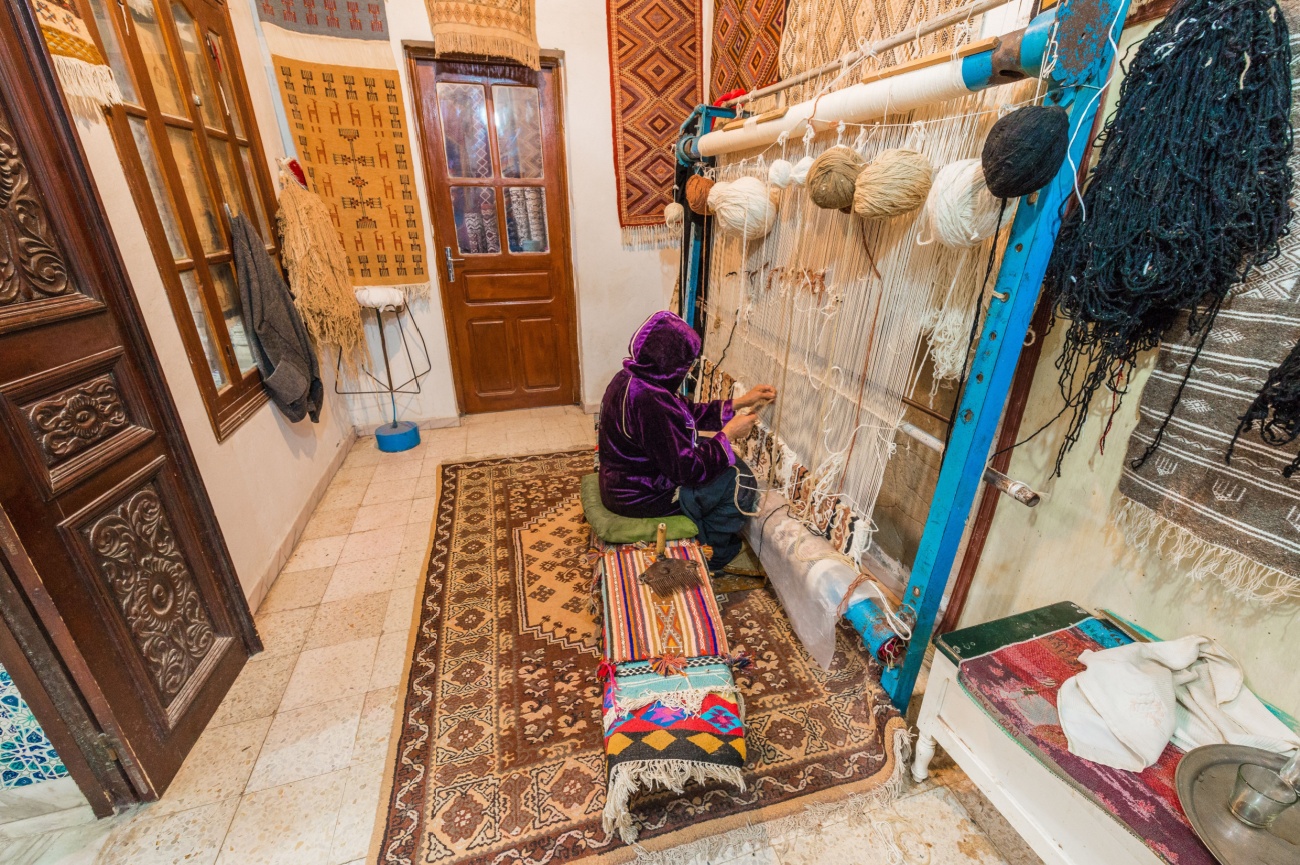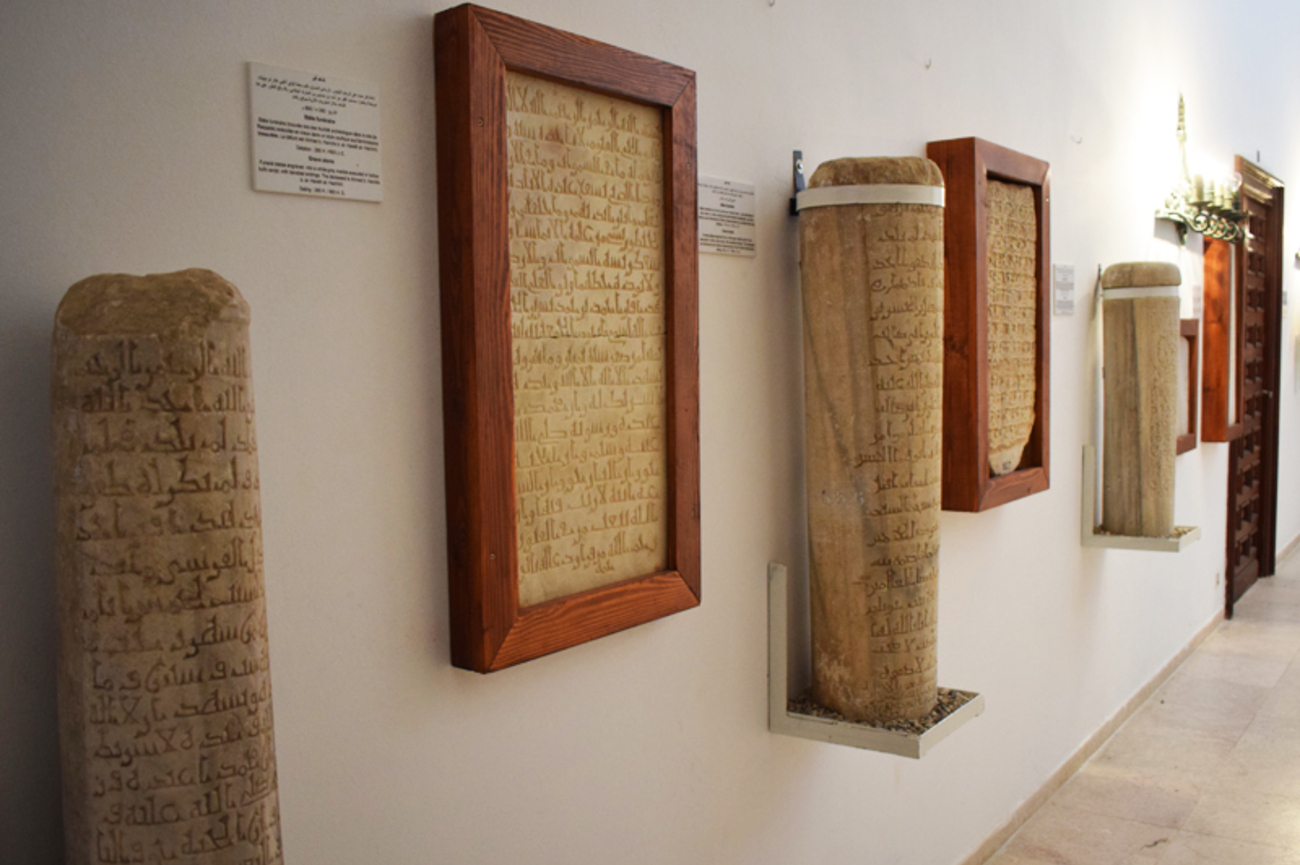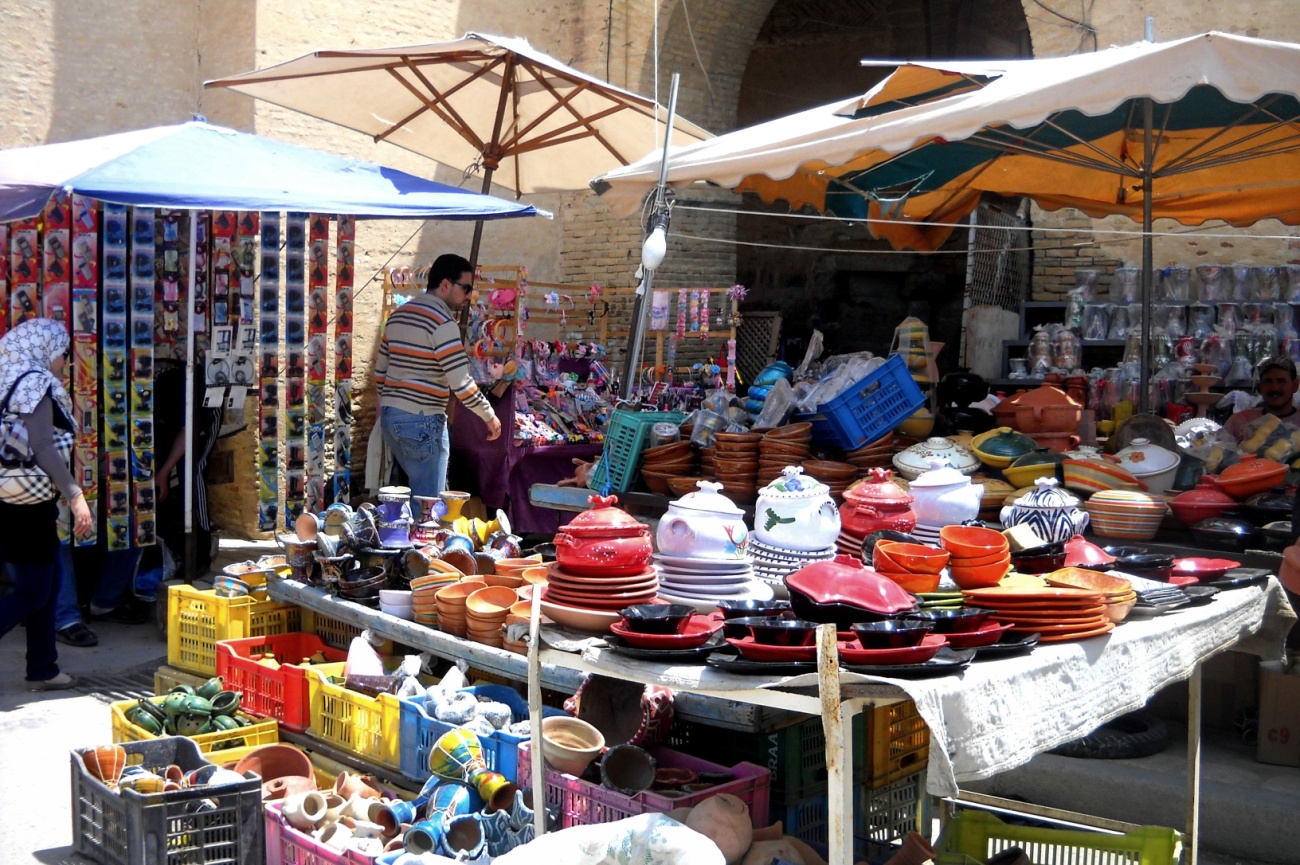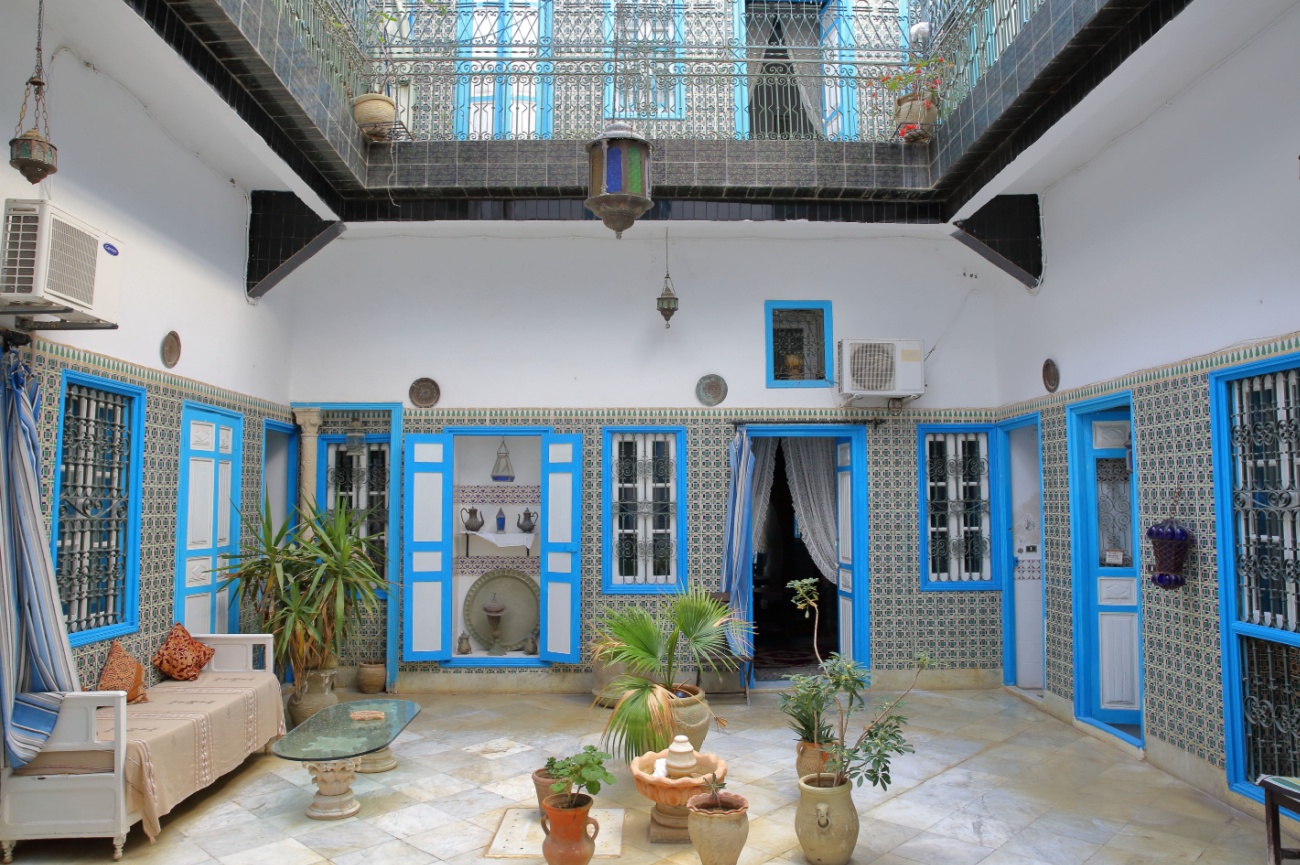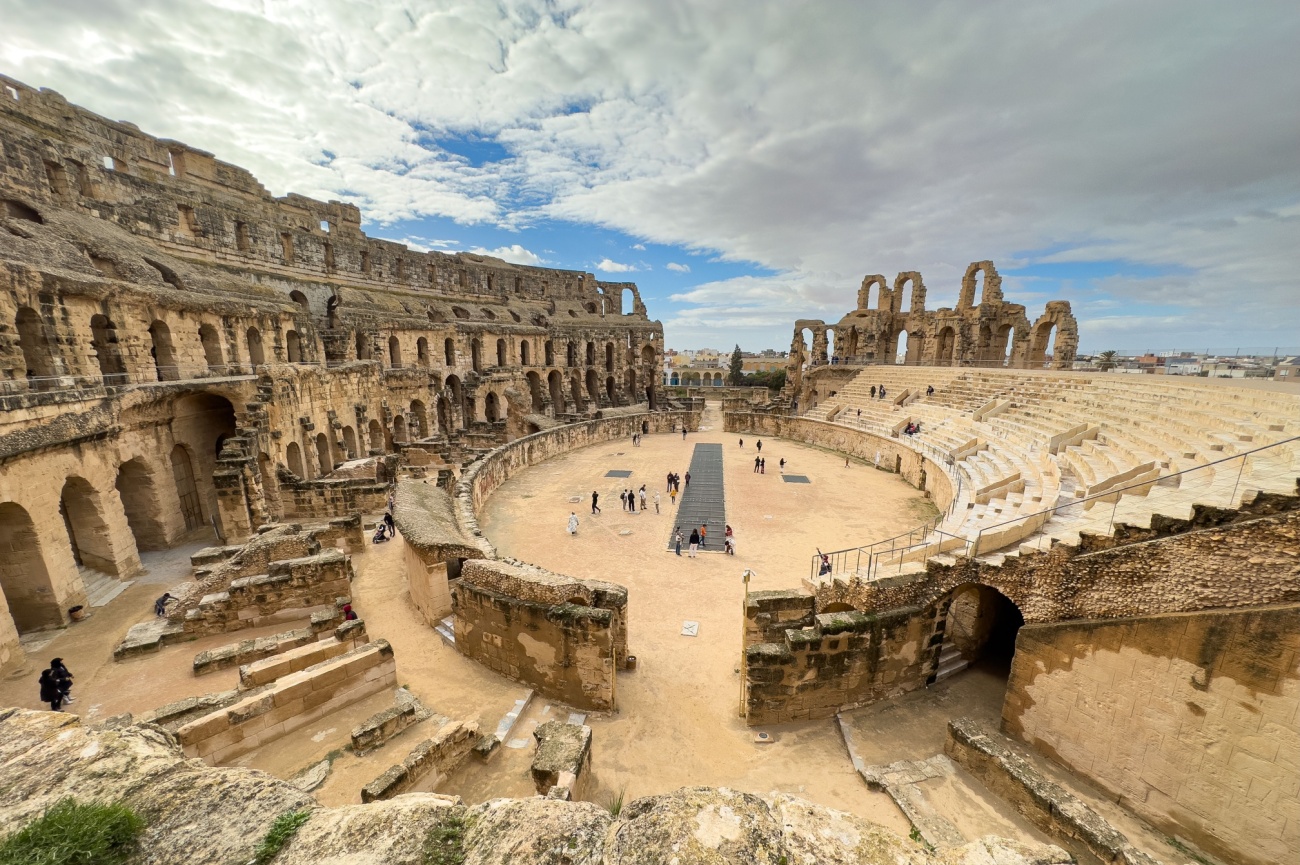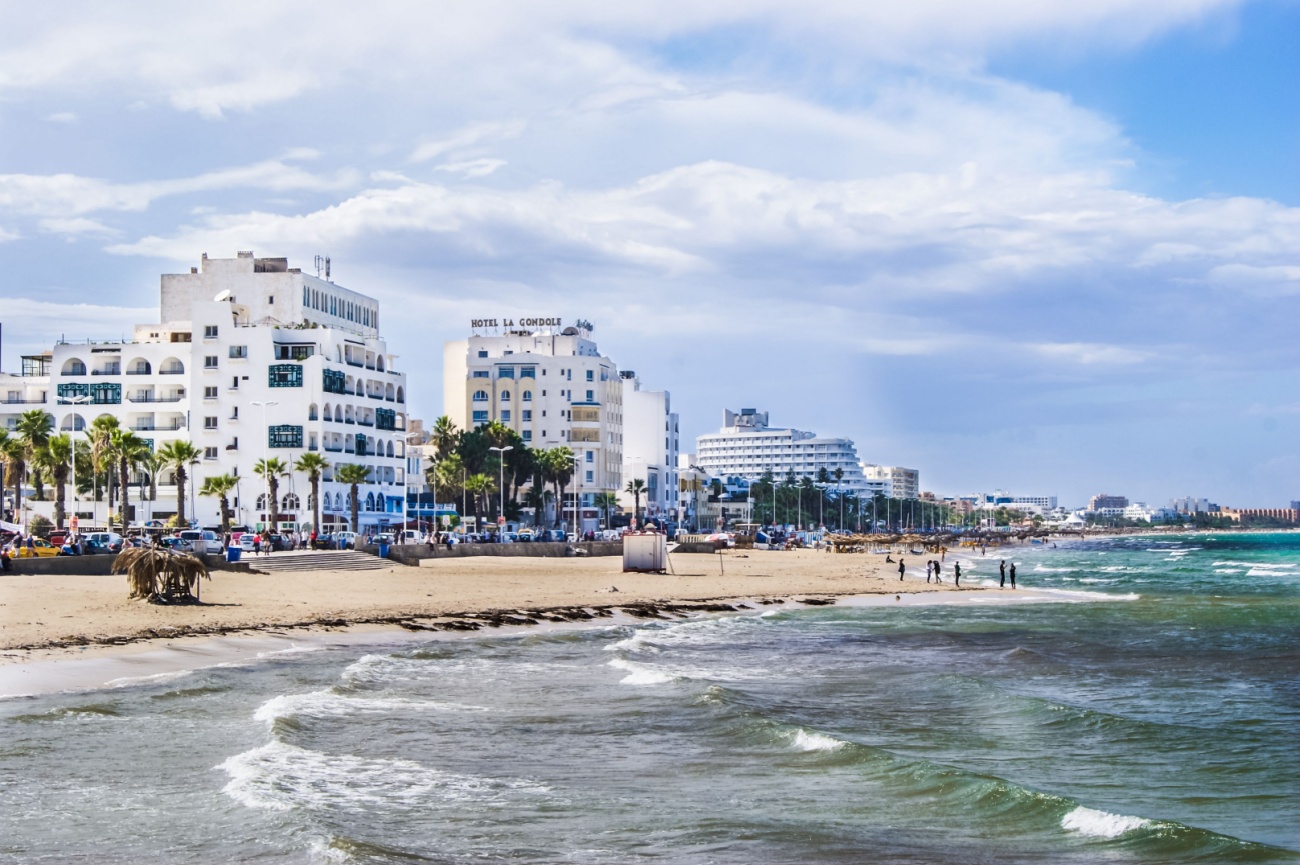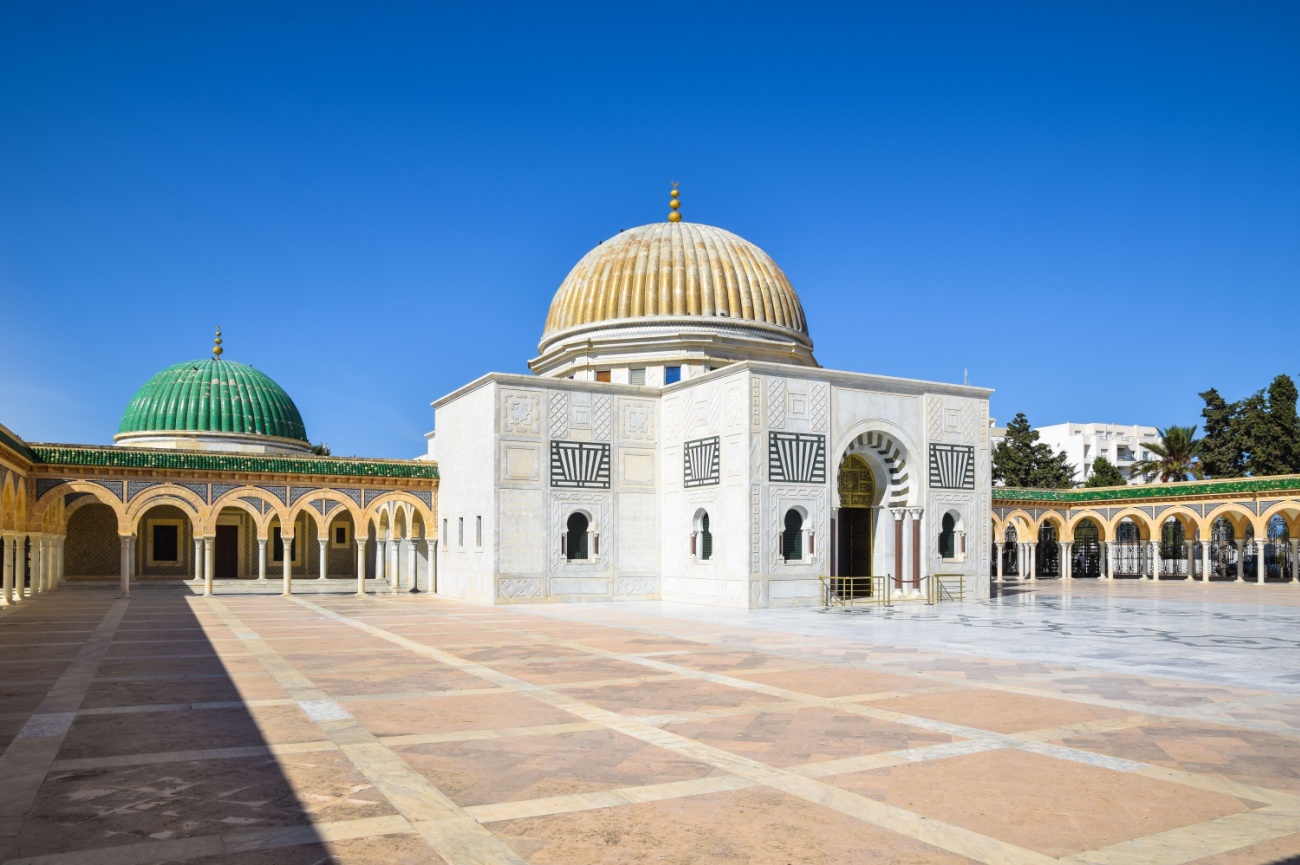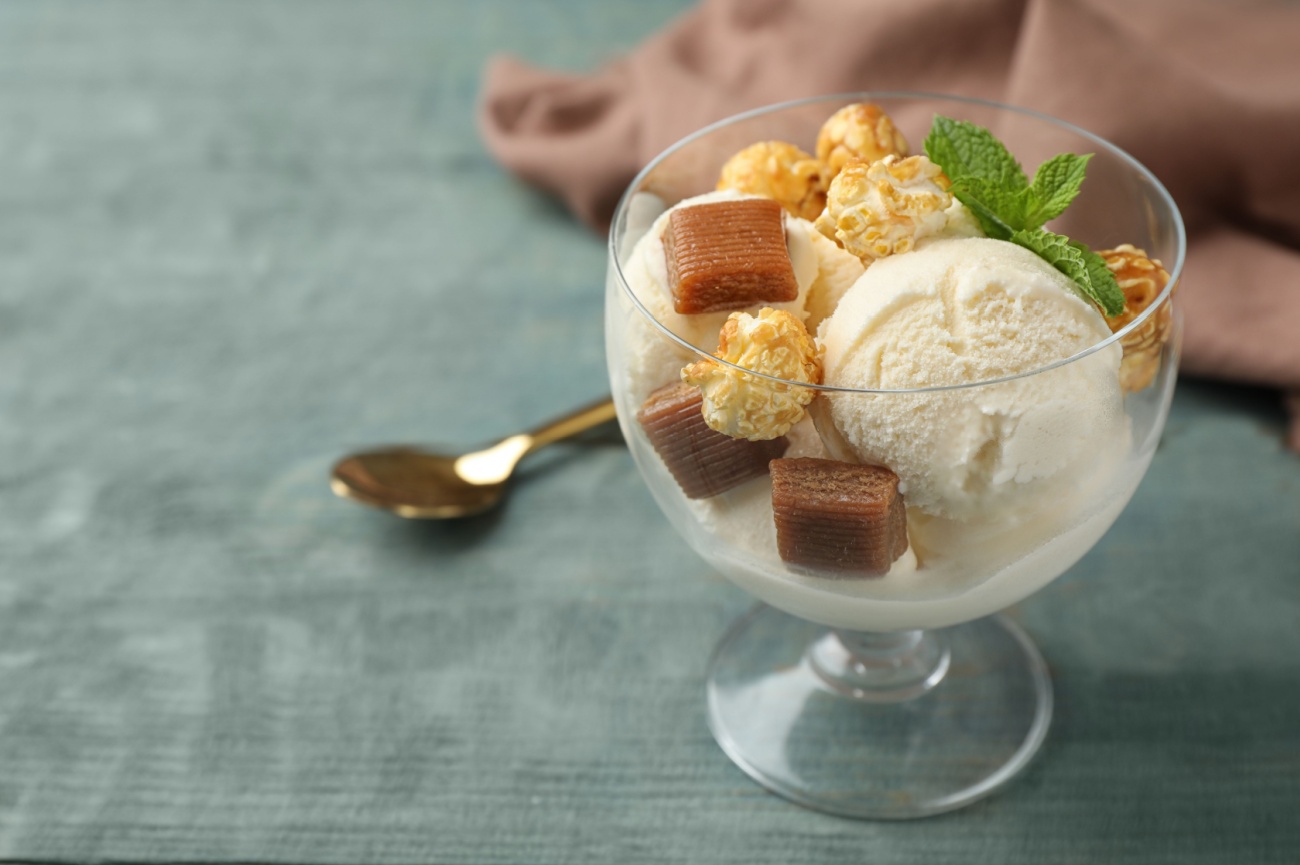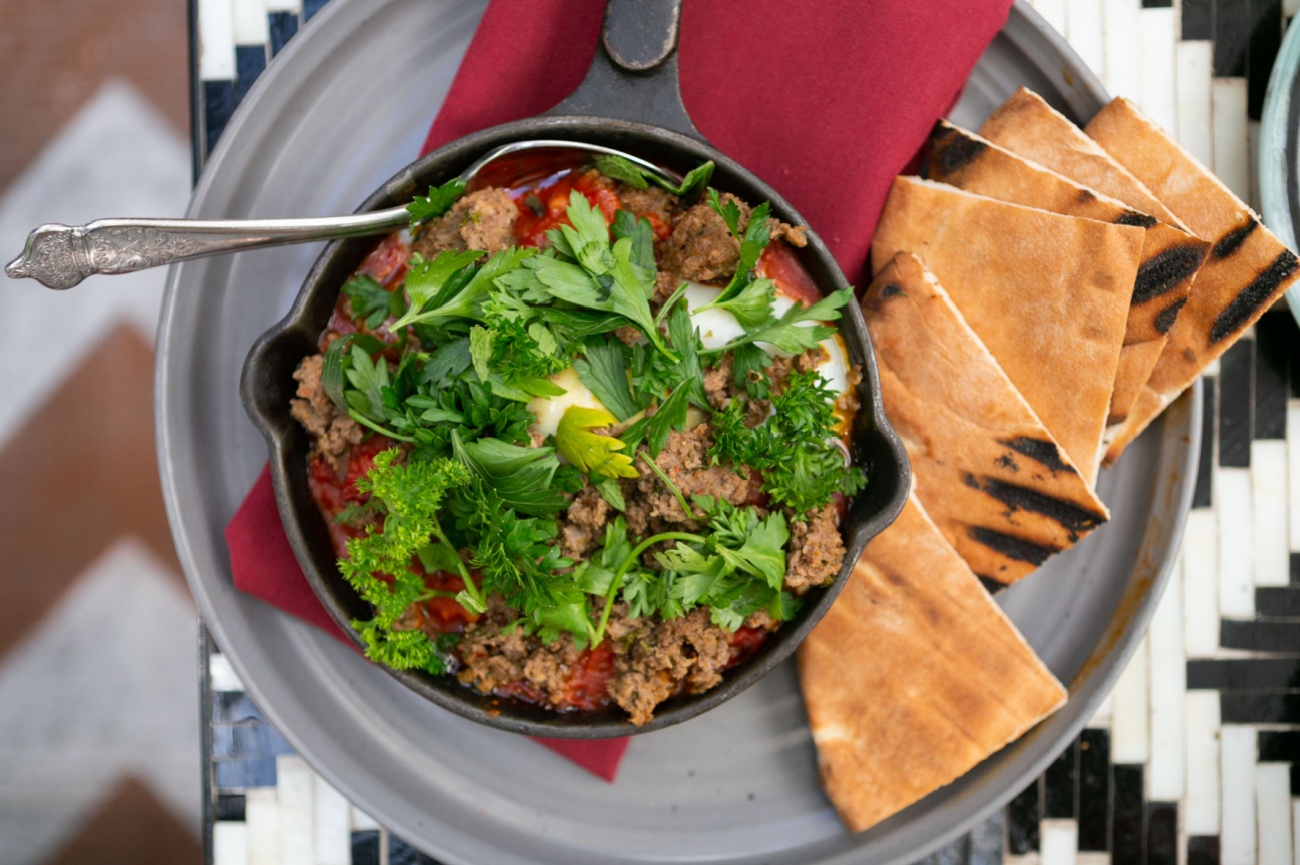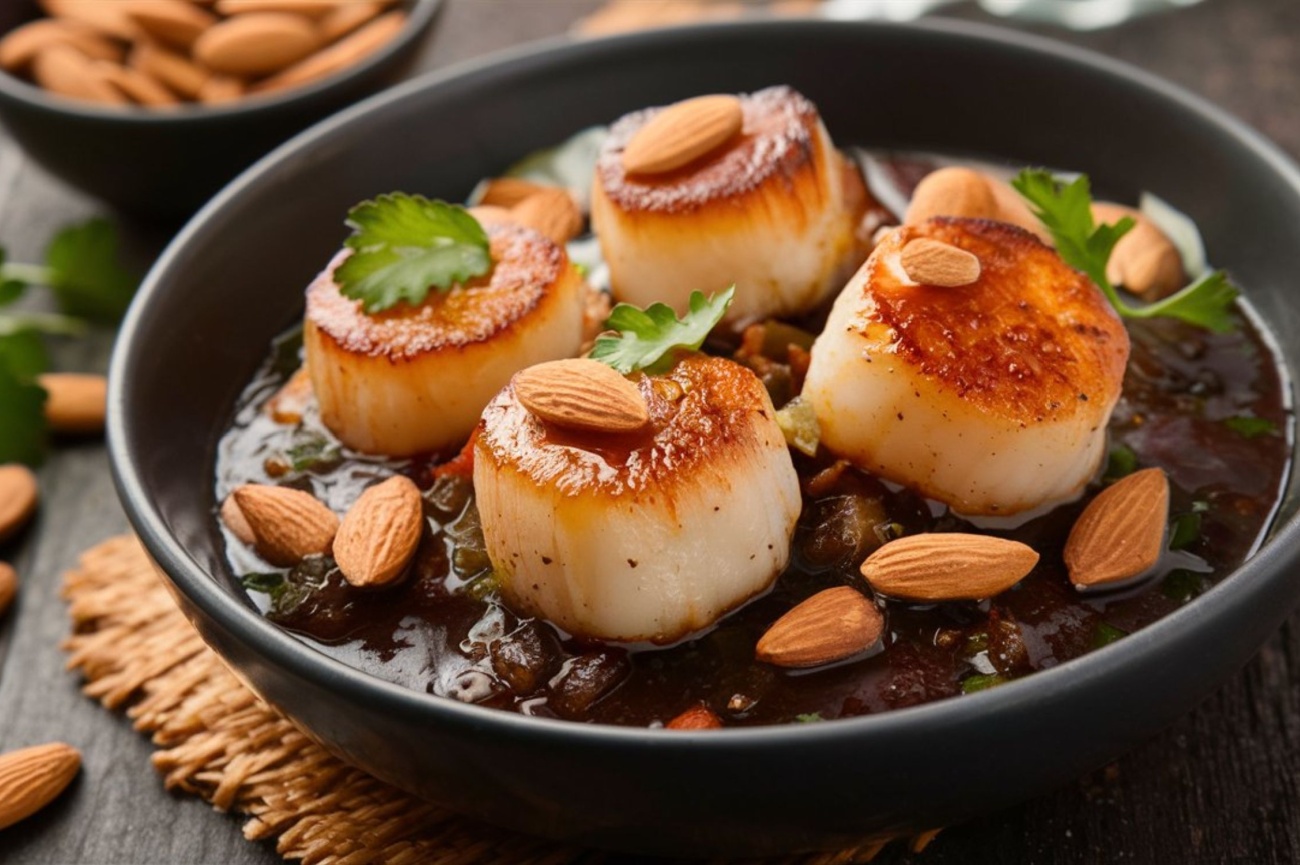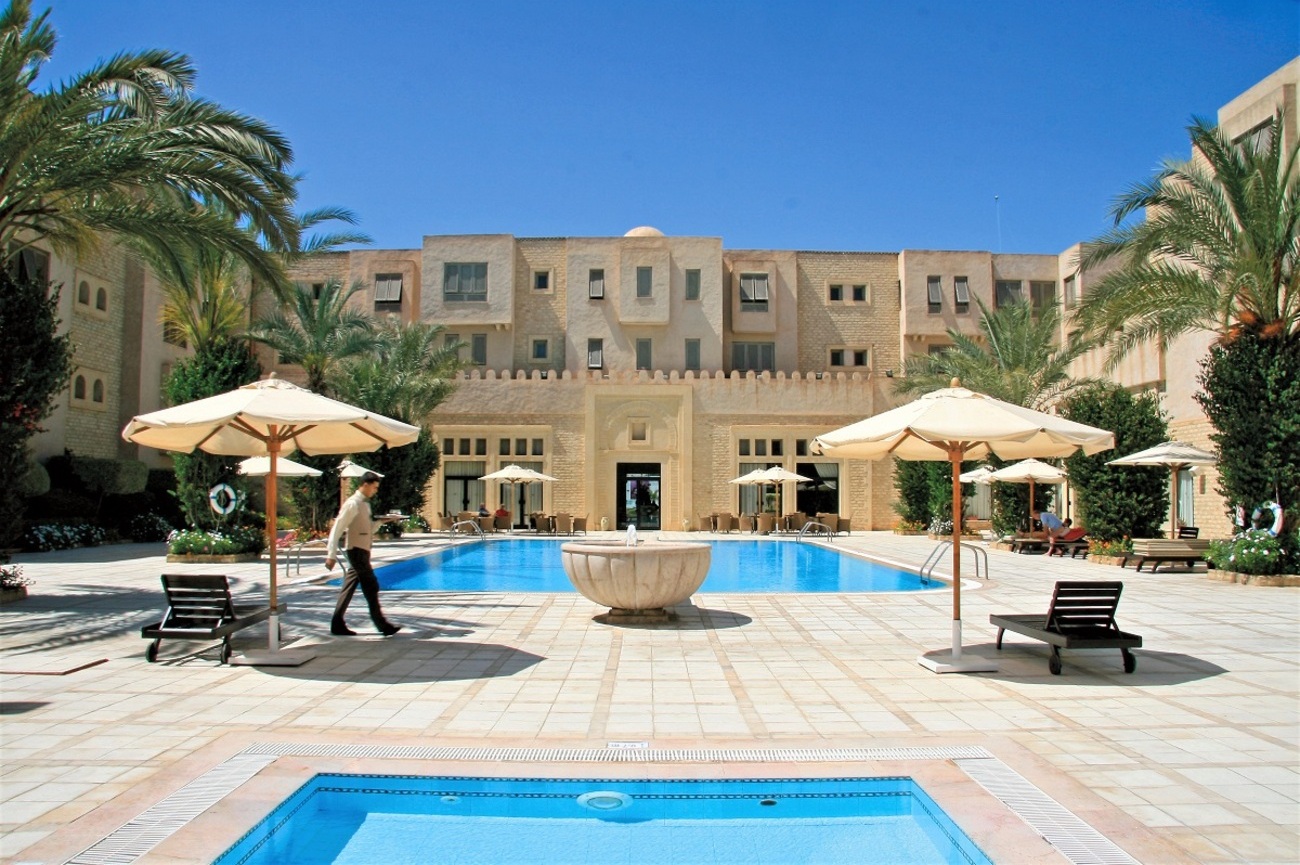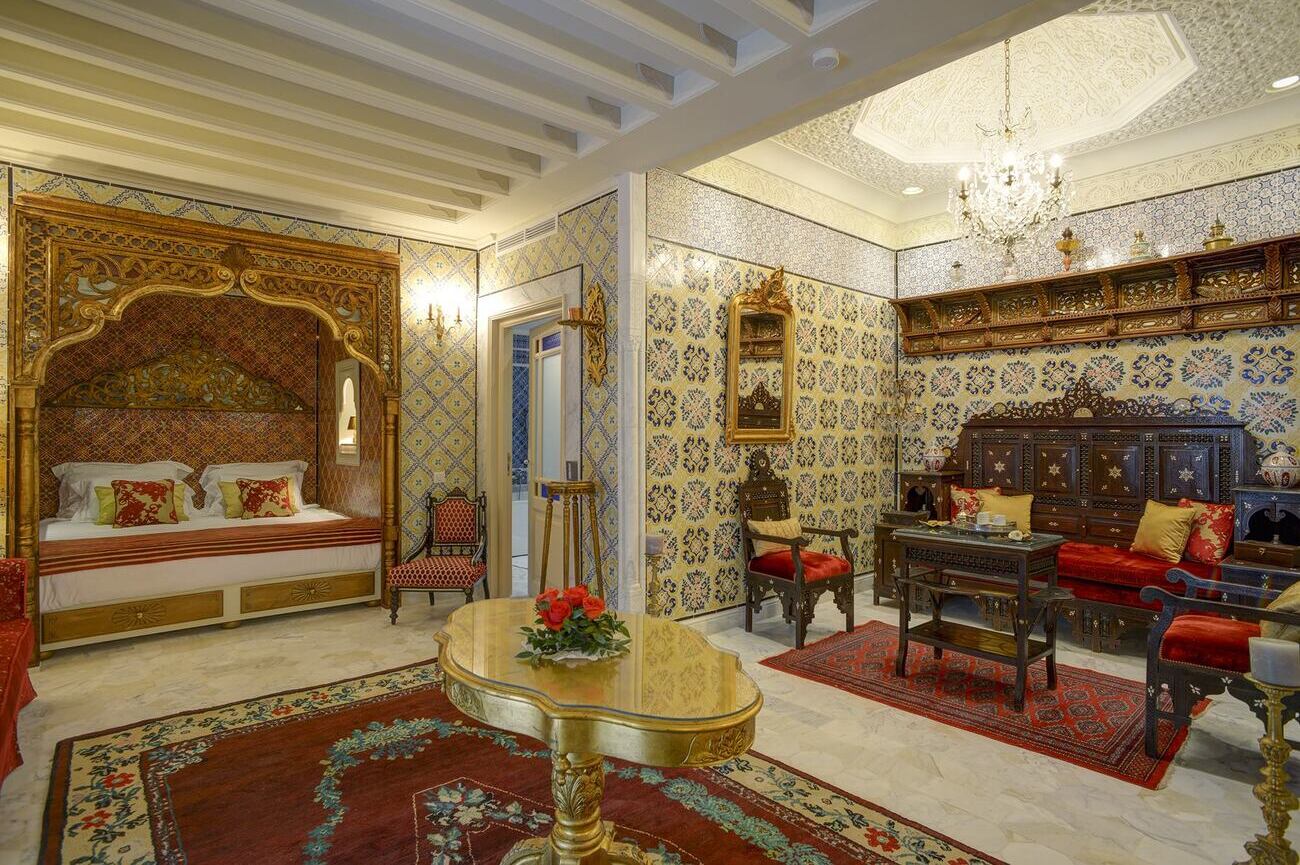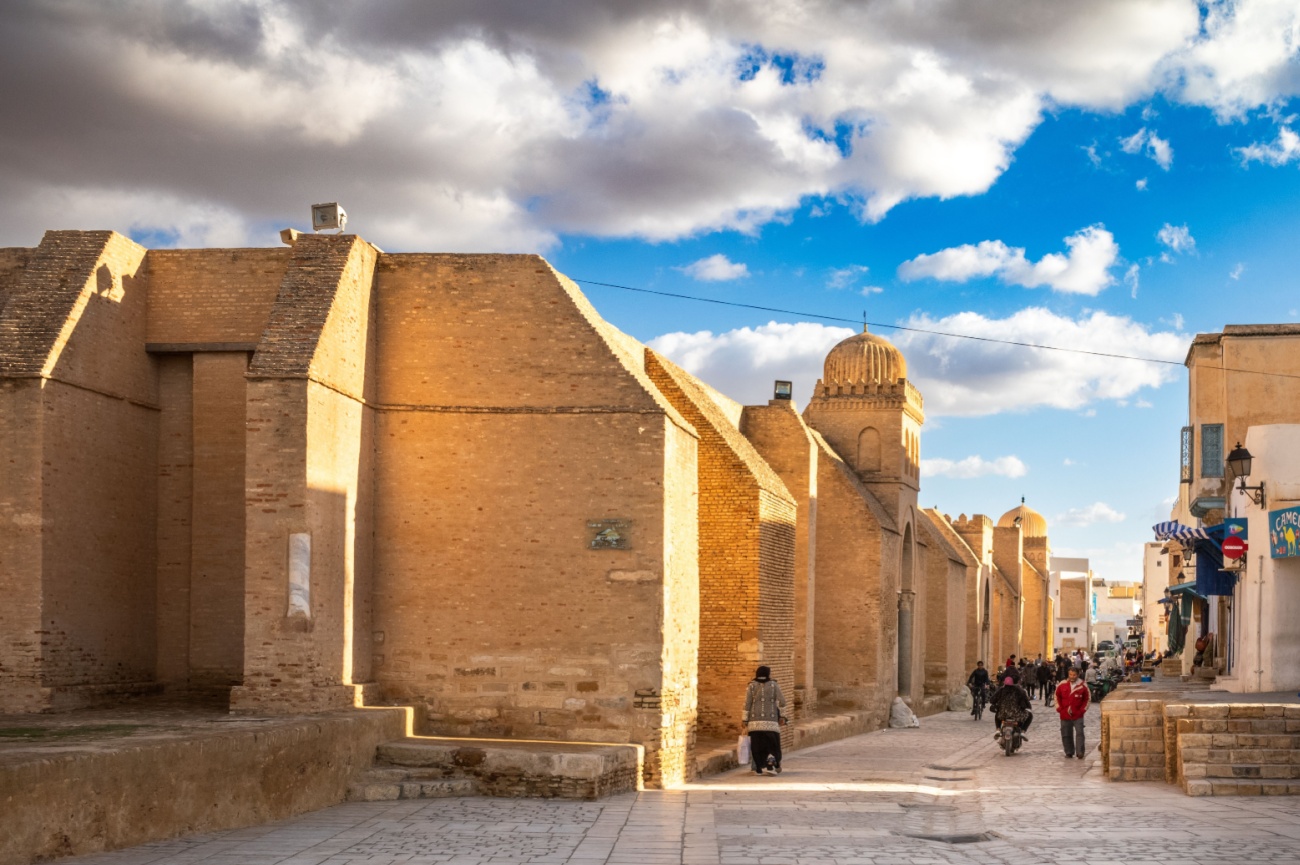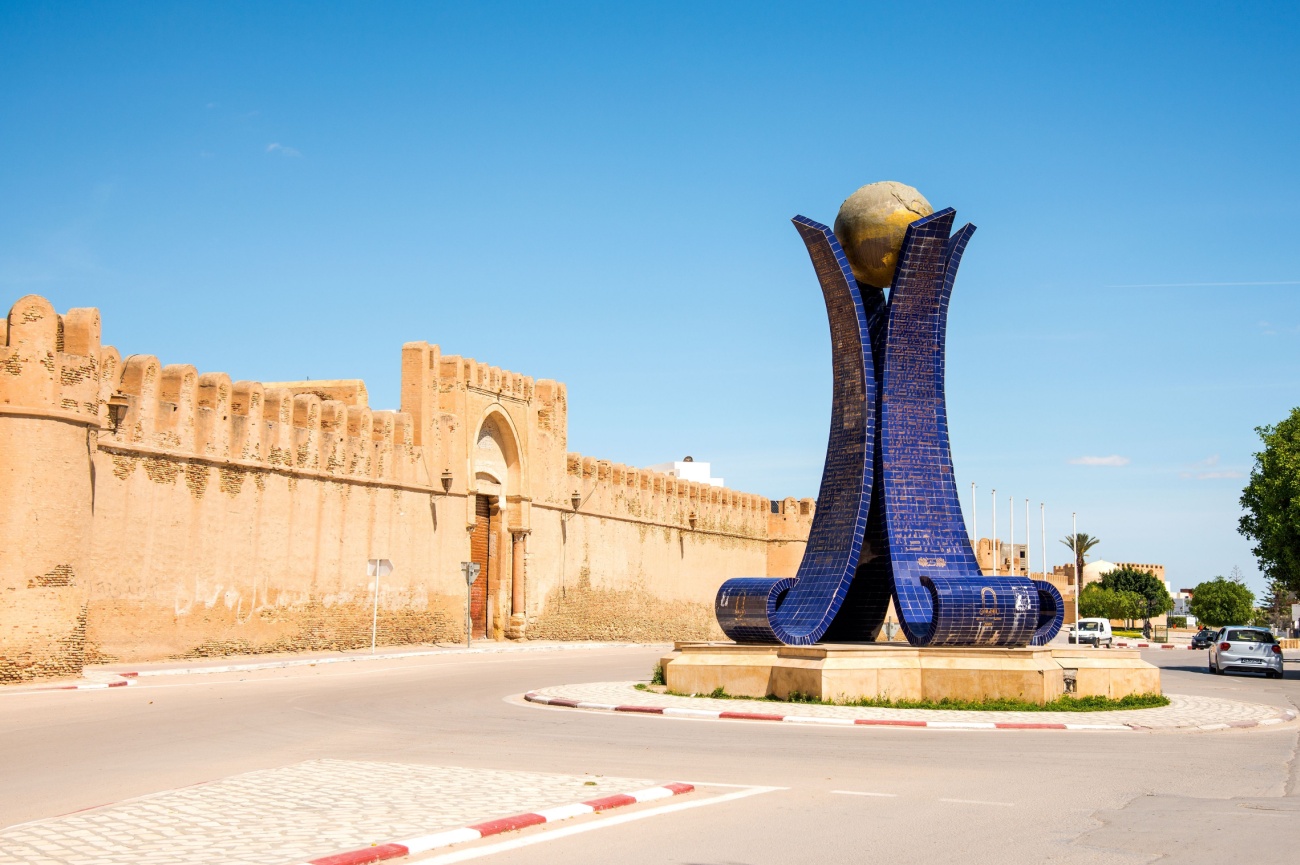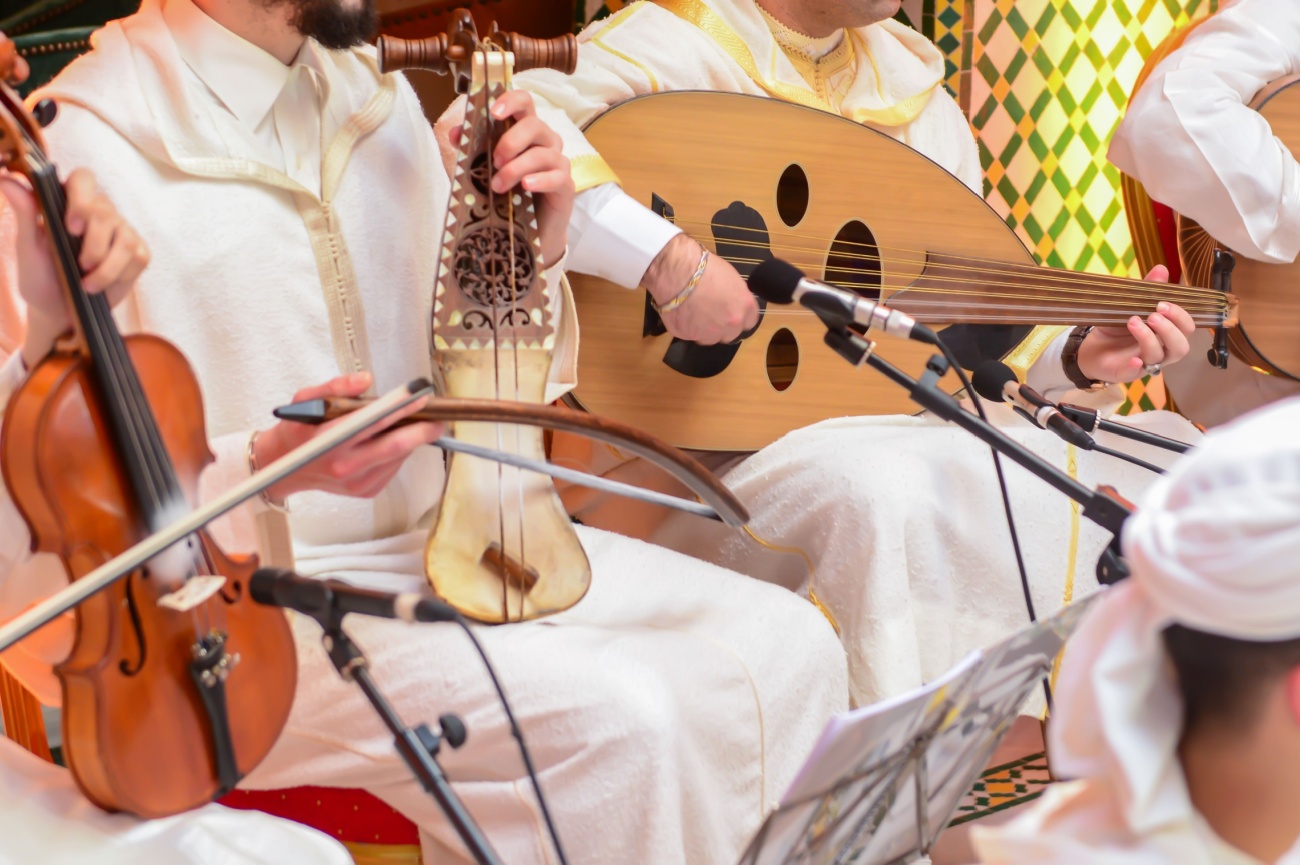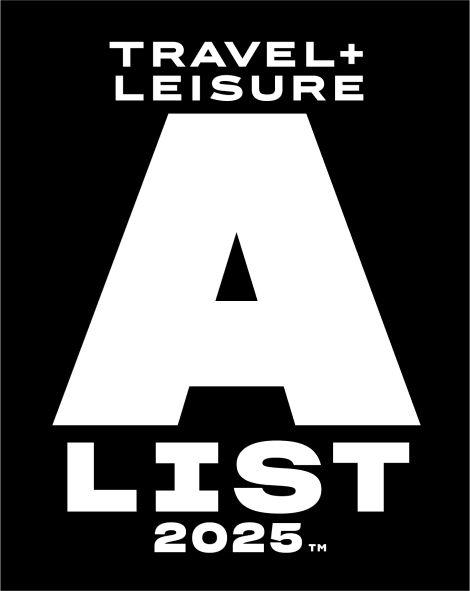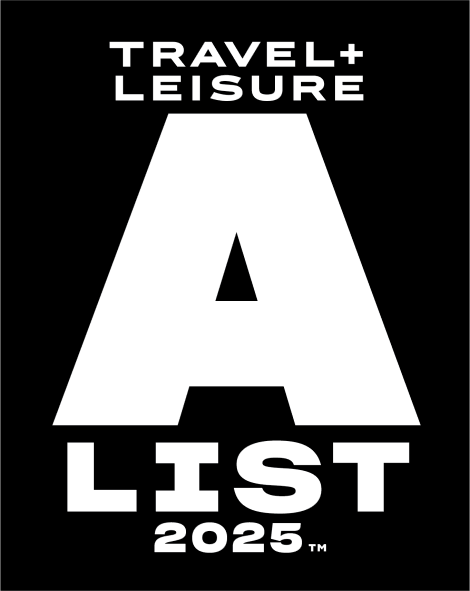Things to Do in Kairouan: 1-Day Itinerary
Welcome to the holy city of Kairouan, one of the most significant destinations in the Islamic world. The spiritual heart of Tunisia and a popular destination for pilgrimage, this UNESCO World Heritage-listed city is known for its impressive mosques and mausoleums.
The souks covered by vaulted ceilings offer everything from spices, ceramics, and crafts to the world-famous Kairouan carpets, while the medina with its narrow streets and whitewashed houses is a great place to explore at your own pace. The fourth holiest city in Islam was also used as a filming location for the popular Indiana Jones Raiders of the Lost Ark movie.
This 1-day travel itinerary allows you to experience the city from a unique perspective and takes you to some of the finest tourist attractions in Kairouan. You will also find a few tips on where to eat and where to stay, as well as suggestions for day trips from Kairouan.
Day 1

Morning: Medina Kairouan
A fascinating myriad of alleys lined with white-washed buildings, beautiful mosques, and tiled courtyards, the Kairouan Medina is your first stop in the morning. Unlike the busy old towns in other Tunisian cities such as Hammamet and Souse, the inner part of Kairouan is very calm and quiet. Here, life is unhurried. Instead of a touristy boutique selling fridge magnets, you will find local workshops offering handicrafts, jewelry, ceramics, and carpets. Kairouan is actually the most famous carpet-making center in the region with many shops and factories.
Great
Mosque of Kairouan
Kairouan is the most significant destination in Islam in Tunisia and many people visit this historical city because of the mosques. The most important holy place for Muslim people in the country is the Great Mosque of Kairouan. Built in 863, the mosque is known for its beautiful architecture and a lovely courtyard decorated with symmetrical columns and arches. The Great Mosque of Kairouan is open to non-Muslims, which means you can admire the architecture from the outside and wander around the premises including the courtyard. The only place closed for non-Muslim tourists is the mosque’s prayer hall. We should mention that a ticket for the Great Mosque allows you access to other tourist attractions in the city.
Mosque
of the Three Doors
Wish to see one of the earliest examples of Islamic architecture which dates back to AD 866? The French call it Mosquée des Trois Portes, while in the Arab world, it is known as Djemaa Tleta Bibane. You are standing in front of the Mosque of the Three Doors, one of the oldest buildings in the city. A holy man from Andalusia (Spain) called Muhammad ibn Khayrun founded this mosque back in the 9th century. You will notice the mosque’s 3 beautiful arched doorways, as well as 2 friezes of Kufic inscriptions. You can only admire the mosque from the outside, as the interior is off-limits to non-Muslims.
Day 1, Morning - Kairouan Tour Map
Afternoon:
Bir Barrouta
In the afternoon, pay a visit to a 17th-century holy well called Bir Barrouta. It is probably one of the most unusual tourist sites in the city. So, legend states that a holy person traveling through the city was very thirsty and decided to pray for water. His dog wanted to help and found water under the ground by digging a hole in the sand. Others believe that the city’s founder saw a golden chalice and discovered the spring. After the well was discovered, camels were brought in to operate the water wheel to provide drinking water for the residents of Kairouan. Today, although the water supply system in the city has changed, you can visit a room for tourists where an actual camel is walking in a circle and filling up buckets.
Zaouia
of Sidi Sahabi
You are now visiting the final resting place of Abu Zama el-Belaoui, a companion of the Prophet Mohammed. Zaouia of Sidi Sahabi is also known as Mosque of the Barber, as Abu Zama el-Belaoui was known for always carrying 3 hairs of Muhammad with him. Built in the 17th century, Zaouia of Sidi Sahabi is a mosque, mausoleum, and Islamic school for learning. This majestic complex is known for stunning tile decoration, Andalusian-style minaret, intricate carvings, and a picturesque inner courtyard. Visitors should be appropriately dressed when exploring this holy site.
Basins
of Aghlabides
Our last stop in the afternoon is an ancient water storage system made up of 2 communicating cisterns from the 9th century. Located just behind the Tourist Information Office, Basins of Aghlabides is a masterpiece of hydraulic engineering in the Arab world. The site looks a bit neglected but is still worth visiting to see a place that provided water for the town for more than a millennium. You can use the Grand Mosque ticket to enter the site.
Day 1, afternoon - kairouan Tour Map
Other
things to see in Kairouan
- House of the Governor: Visit a privately owned carpet shop with colorful patterned carpets, incredible tile work, and Islamic architecture. Once the house of the governor of Kairouan, it is one of the most beautiful buildings in the city. The owners are super friendly and will give you a tour of the house with glamorous rooms and tell you a bit about the history of the place. Expect to see numerous mosaics, painted ceramics, and many historical objects, as well as traditional Kairouan carpets that you can purchase. Don’t miss the stunning rooftop terrace known for spectacular sunset views.
- National Museum of Islamic Art of Raqqada: Located just a short drive from the center of the town, this former presidential palace serves as a cultural and educational center devoted to medieval Islamic art and civilization. Spread across 2 floors, the National Museum of Islamic Art of Raqqada houses an impressive collection of ceramics, glazes pottery, coins, and glass pieces. There is also a manuscript room where visitors will find the pages of the Blue Qur’an dating back to the 10th century. The museum is located in Raqqada, a small town that used to be the second capital of the country during the rule of the Aghlabids Dynasty.
- Kairouan's Souk: Located inside of the Medina just a short walk from the Bir Barrouta, Kairouan’s souk quarter is where you will find traditional craftsmen of the city ranging from potters to metal workers. There is an open-air area, as well as a covered section. It is the best place to the city to purchase Kairouan carpets.
- Dar Hassine Allani: No visit to Kairouan is complete without stopping by this wonderfully preserved Tunisian house known for its Arabian-Moslem architecture. Both a museum and a guesthouse where you can spend the night, Dar Hassine Allani is a beautiful building with colorful wall tiles, ornately carved frames, and stained-glass windows. The family who lives in the house offers tours of the museum/guesthouse.
Day trips from Kairouan
- Amphitheatre of El Jem: Tunisia's most famous historic attraction is located just 71 kilometers southwest of Kairouan, making it a popular day trip destination among tourists. The Amphitheatre of El Jem is a unique Roman monument and the fourth-biggest amphitheater in the world. You can explore the underground tunnels or enjoy views of the oval stage from the third floor. While you are in El Jem, spend an hour or two at the nearby museum which houses an extraordinary collection of Roman mosaics.
- Sousse: It takes about an hour by car to get from the holy city of Kairouan to Sousse, both a modern resort complex and a commercial port city known for its impressive history. Get lost in the narrow alleys of the Medina, enjoy panoramic views from the Ribat, and explore the Dar Esid Museum. The third-largest city in Tunisia is also home to Bou Jaafar Beach where you can go swimming and enjoy other water activities.
- Monastir: Go for a day trip from Kairouan to Monastir, a small coastal town with picturesque beaches, a lovely promenade, and a few cool historical sites. If you wish to spend a day on the beach, head out to the northern suburb of Skanes where all the all-inclusive resorts can be found. Culture vultures will want to stay within the medina and check out the impressive Ribat, see the final resting place of Habib Bourguiba, and discover an impressive collection of traditional Berber and Tunisian clothing and jewelry at the Monastir Museum of Folk Arts & Traditions. If you are a seafood lover, don’t miss the Marché Central de Monastir. It takes 1 hour and 10 minutes to get from Kairouan to Monastir.
Where to eat in Kairouan
- El Brija Restaurant: You will find this busy dining establishment near the Grand Mosque. You can dine outside on the terracotta terrace filled with beautiful desert plants or inside one of the dining halls. El Brija Restaurant is all about delicious traditional Tunisian dishes ranging from couscous and brik to seafood delicacies. Start with the signature chorba or order the house couscous (fish chickpeas, peppers, and eggplant) which is served in a terracotta bowl. For mains, we recommend ojja with sausages if you like spicy foods. The lamb chops in honey and white almonds are also a good option.
- Dar Mima Chez Mamie: It takes about a minute to get from El Brija to the next place on our list. Welcome to Dar Mima Chez Mamie, a popular coffee shop located directly next to the Grand Mosque. The baristas here are knowledgeable about coffee and speak good English. The terrace is a nice place to sit and watch the people visiting the Mosque. As for the menu, the coffee shop offers coffee, ice cream, and a variety of delicious smoothies.
- GO Café: Run by a friendly couple, this cozy café in Kairouan is a popular place to grab breakfast and enjoy traditional Tunisian dishes. Self-designed by the owners, Go Café looks beautiful with great attention to detail. On the menu, you will find everything from shashuka to couscous with dried fruits and nuts. There are lots of vegetarian/vegan options on the menu which is not that common in Kairouan.
- Dar Abderrahman Zarrouk: Situated inside an 18th-century traditional building right in the heart of the Medina, Dar Abderrahman Zarrouk is all about Tunisian cuisine. From your typical Tunisian soup with pasta, lamb, and tomatoes to couscous dishes and the mouthwatering veal with mushroom sauce, there is plenty to choose from. The restaurant itself looks really nice with a sunny courtyard and a fountain.
- Plan B Kairouan: If you are looking for a unique place to eat in Kairouan, make a reservation at Plan B. A chic eatery with cool graffiti on the walls, Plan B Kairouan is not as traditional as other restaurants in the city. It attracts a younger crowd and offers dishes like sandwich escalope penne, scallops, and pasta penne shrimp.
Where to stay in Kairouan
- Hotel La Kasbah Kairouan: Located right in the city center, Hotel La Kasbah Kairouan is the only 5-star hotel in Kairouan. It is a boutique hotel situated inside a citadel and fitted with gorgeous Tunisian decorations. Guests love the decorations, especially the spacious en-suite bathrooms adorned with lovely Tunisian tiles. There is a beautiful courtyard with a very inviting swimming pool and 2 on-site restaurants serving both local and international dishes. Guests have access to a Turkish/steam bath which is available for an additional charge.
- Dar Alouini: One of the newest additions to the boutique hotel scene in Kairouan, Dar Alouini is a beautifully renovated guesthouse decorated in a warm and traditional style. You will be staying in the middle of the Medina, just a 2-minute walk from the Great Mosque. With exquisite tile work, a central courtyard with a glass ceiling, and a rooftop terrace that offers panoramic views of the medina, the hotel itself is a feast for the eyes. There are only 9 bright rooms and suites to choose from, each named after a flower. After a full day of sightseeing, use the hotel’s sauna/hammam to relax your muscles or go for a swim in the indoor pool.
The best time to visit Kairouan
The city of Kairouan is a year-round destination known for its pleasant climate and warm temperatures. It is not a coastal city, which means there are no crowds of tourists visiting in summer. The winter season is not that bad with an average temperature around 17C. However, it gets cold in the evening, so make sure to pack a light jacket if you decide to visit Kairouan in winter. July and August are extremely warm and the temperature can reach 38C, making it a bit difficult to explore the tourist sites. Therefore, the best time to visit Kairouan is during the shoulder seasons, in March and April, and in October and November. We should also mention that the city gets quieter during Ramadan with only a few restaurants and cafes working in the evenings.
Kairouan Festivals
- Mouled Festival: An annual event celebrating the birth of the Prophet Muhammad, the Mouled Festival in Kairouan is definitely the most anticipated event of the year in this part of Tunisia. The important festival in the Islamic world usually lasts for 9 days and includes everything from Quran memorization and reading competitions to live music, exhibitions, and an array of traditional foods including the Mouled signature asida (sweet pudding). The festival is huge and usually includes over 70 events.
Our offices:
